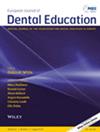Bridging Classrooms and Communities: The Transformative Impact of Community-Based Dental Education on the Learning Experiences of Undergraduate Students
Abstract
Aims
This study aimed to evaluate the impact of community-based dental education (CBDE) on the learning experiences of undergraduate dental students and recent dental graduates from two diverse geographical regions.
Methods
The study followed a cross-sectional design, conducted online using Google Forms, with ethical approval from Qatar University. A non-probability purposive sampling method was used to recruit dental students and recent graduates from three institutions in India and one in Qatar. A questionnaire based on 20 closed-ended items and two open-ended questions, developed by a team of dental academics, was used for data collection. Data analysis involved descriptive statistics, analysis of variance (ANOVA) and thematic analysis for open-ended responses.
Results
The study included 148 participants, with 116 female (78.37%) and 32 male (21.62%) students, mostly from India (75%) and the rest from Qatar (25%). ANOVA revealed significant differences based on age, country and stage of education (p < 0.001). Dental interns had the highest mean score (1.12 ± 0.8), while Year 2 students had the lowest (0.75 ± 1.08). Female participants had a slightly higher mean score (1.05 ± 0.77) than male participants (0.92 ± 0.98), although this difference was not statistically significant (p = 0.127). Key challenges included inadequate support and cultural barriers in India, and conflicts with religious obligations and didactic workload in Qatar. Recommendations focused on enhancing field activities, logistical support and mentorship programmes.
Conclusions
The study shows that dental students value CBDE for developing essential skills for community engagement. However, challenges differ across socio-cultural contexts, highlighting the need for more localised and supportive frameworks to improve CBDE experiences. The variation in student perceptions by age, education stage and country suggests that CBDE strategies should be flexible and adaptable to address the diverse learning needs of students.


 求助内容:
求助内容: 应助结果提醒方式:
应助结果提醒方式:


